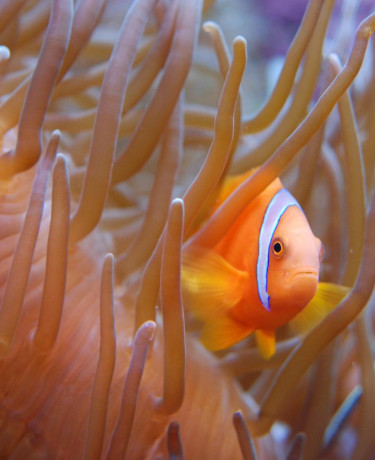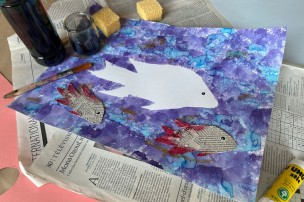
Tomato clownfish
Amphiprion frenatusOn encountering certain tropical sea anemones, clownfish can frequently be observed alongside them, living as a group or a pair according to species.
This behaviour may seem surprising since the tentacles of sea anemones contain stinging cells that can sting, paralyse and kill fish of the same size who will then be absorbed into the anemone. Clownfish, on the other hand, seem to be immunised against stings; they will even enter the anemone to protect themselves from predators, and lay their eggs close by.
The mucus coat of the anemone contains a "time-release substance" that inhibits activation of the stinging cells when the tentacles touch each other. Clownfish immunise themselves by rubbing against the anemone, very briefly to start with, to gradually coat themselves with this substance which will protect them later.
The association of the clownfish and the anemone is a form of symbiosis since it is mutually beneficial. Each clownfish has its own assigned anemone which it provides with food in the aquarium. In the ocean, the clownfish defends its anemone against attacks from butterflyfish, which may graze on its tentacles.
Clownfish are protandrous hermaphrodites. Within a group of clownfish, the biggest one will be a female, the others are males. When the female dies, the biggest male turns into a female. The female is much bigger than the male.
When it is young, it sports 3 white stripes for a few weeks. Gradually, the tail stripe disappears, then the one on the middle of the body. By the age of 3 to 4 months, only the stripe on the back of the head remains. A black spot also develops in the middle of the body and its colour intensifies in the adult fish.




